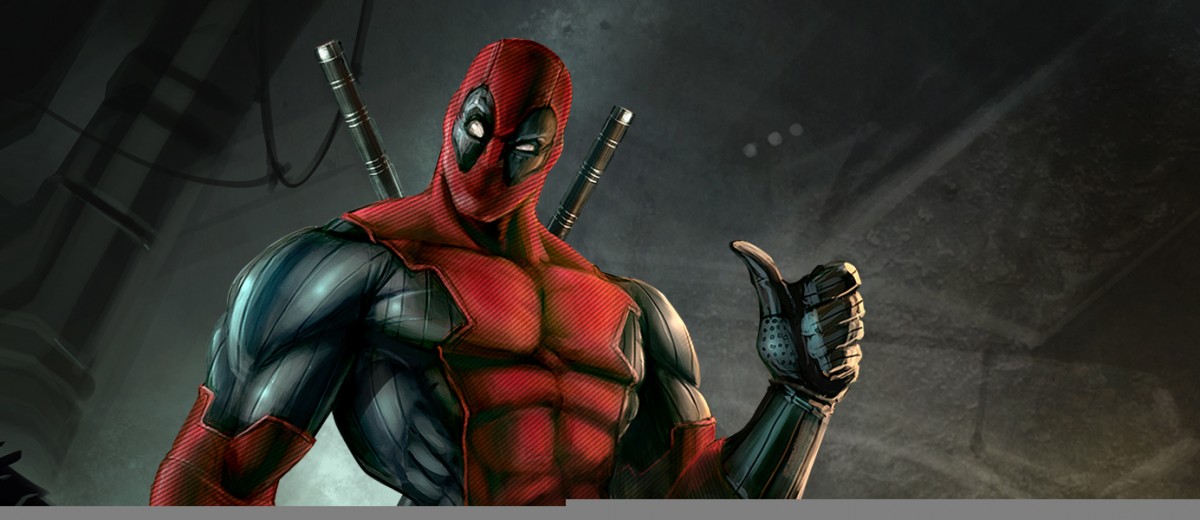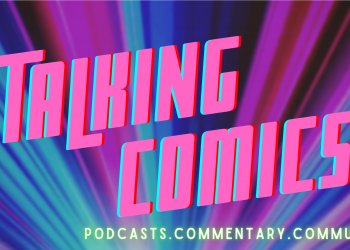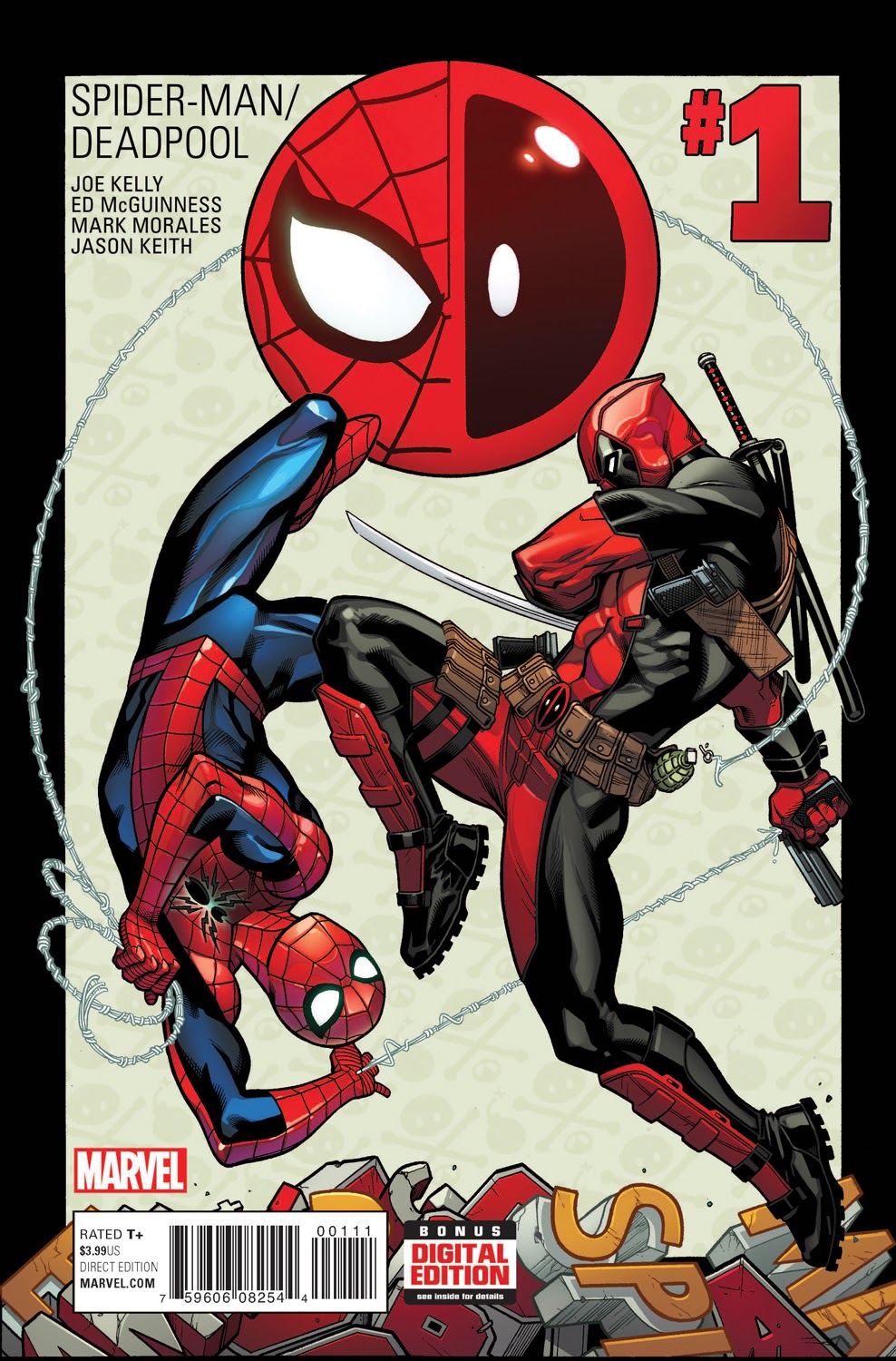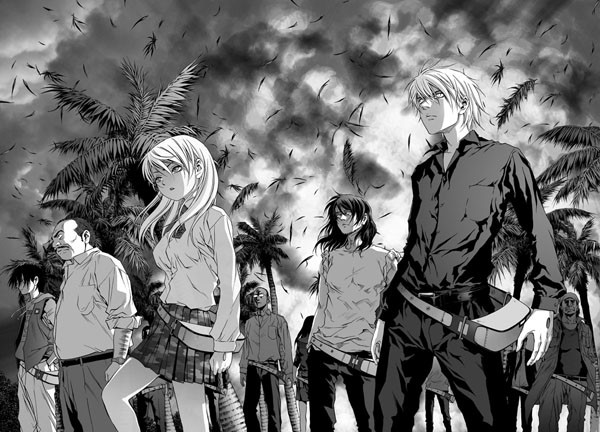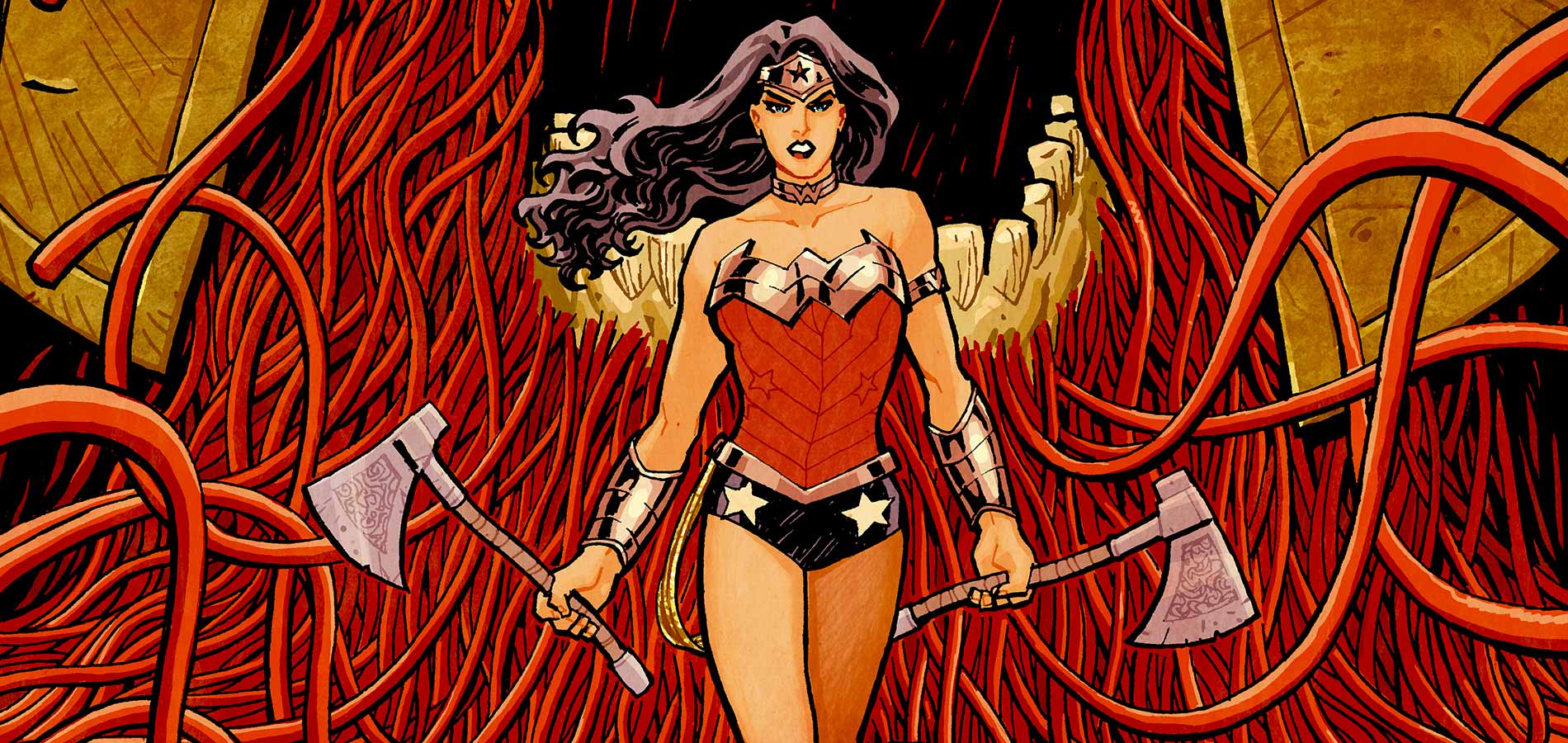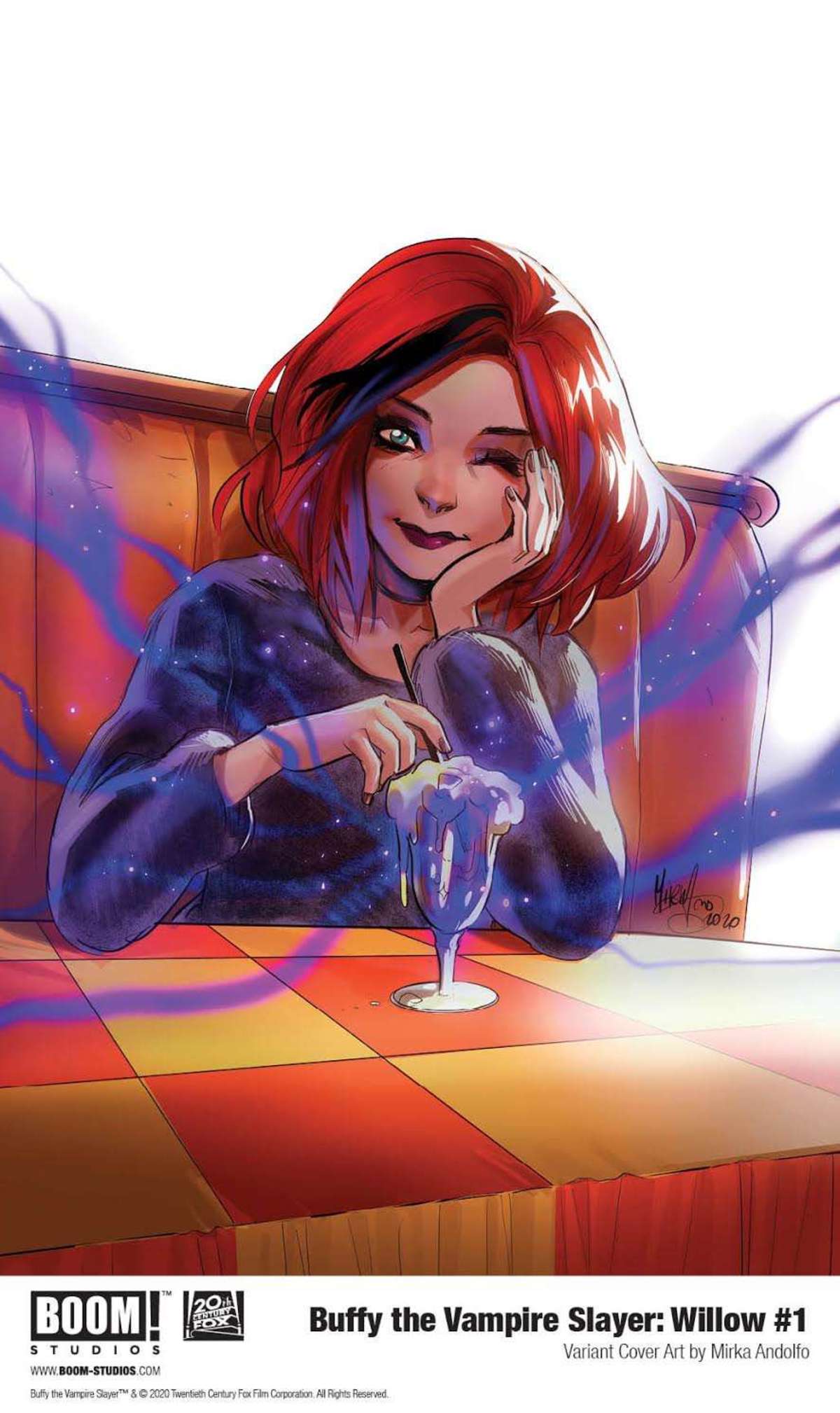More Than Just a Weapon: Cutting to the Heart of Wade Wilson
By Mackenzie Parker
As the ever rumored, ever gridlocked movie based on the popular character of Deadpool is finally generating itself through casting a schedule news, I am bracing for what we my potentially see when the film is finally released. Coming from the place of an affectionate fan of the character, I have a reasonable level of concern about how one of my paper friends will be portrayed. This is compounded by concerns I’ve had for years about how the character is being portrayed in the comics. I believe much of the early characteristics that defined who he was have been slowly forgotten. I think there is an opportunity now with more attention coming from a big cinematic event to bring the merc with a mouth back to his roots without having to lose what he is now.
A lot has been made of what the rating of the film will be, which is no small thing in terms of how honest the filmmakers will be allowed to be about the nature of the character. In his review of the 1999 film Eyes Wide Shut, Roger Ebert commented about the post production censorship of the orgy sequence the studio forced upon it by saying, “The joke is that Eyes Wide Shut is an adult film in every atom of its being. With or without those digital effects, it is inappropriate for younger viewers. It’s symbolic of the moral hypocrisy of the rating system that it would force a great director to compromise his vision, while by the same process making his adult film more accessible to young viewers.” By removing blood splatters and visualizing the kind of actions Deadpool is known for, the studio may be attempting to make shocking violence more accessible to younger viewers in the name of merchandizing and higher grosses (Side note: anyone who has ever been a kid knows the young will find a way to see what they shouldn’t see regardless). This may not be avoided, but I believe what can is the ability of the filmmakers to comment about the brutality of the character by being honest about who the character is at his core both in the context of his world and in the annals of comic book history.
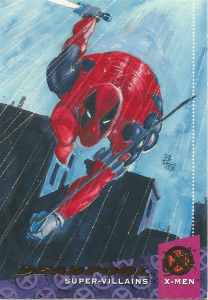 My first exposure to Deadpool was in the form of a 1994 Fleer card. I was 7 years old sitting in the woods behind my neighborhood, free of cell phones and far from the reach of parental guidance, exchanging cards like currency with the boys on my street. I learned that the character is a wisecracking cancer surviving mercenary and the subject of a bio-enhancement experiment that made him nie indestructible. I thought he looked cool and had a cool story and he blended well into the large tapestry of comics I would collect in that era. When he really caught my attention I was 25 years old, studying abroad in Moscow, Russia for the acting career I am currently pursuing.
My first exposure to Deadpool was in the form of a 1994 Fleer card. I was 7 years old sitting in the woods behind my neighborhood, free of cell phones and far from the reach of parental guidance, exchanging cards like currency with the boys on my street. I learned that the character is a wisecracking cancer surviving mercenary and the subject of a bio-enhancement experiment that made him nie indestructible. I thought he looked cool and had a cool story and he blended well into the large tapestry of comics I would collect in that era. When he really caught my attention I was 25 years old, studying abroad in Moscow, Russia for the acting career I am currently pursuing.
I read from the Marvel digital catalogue in my spare time between plays by Chekhov and tours of the monuments to the Second Patriotic War (WWII for all you Amerikanskaya). Even without the touch and smell of pulp paper, the art styles of Joe Madureira and Rob Liefeld rendered digitally took me back to that kid in the woods in the Midwest. Moody storytelling chock-a-block with weapons no real person could ever hope to lift (unless the wielder was enhanced with bionics of course). Grimy alleyways. Dark castles. Genetic research facilities and the characters they spawned, both looking like the combined technological nightmares of Jack Kirby and H.R. Giger. The Dirty Harry style punk rock dialogue that seems almost parodic so many years later. Not to mention the, shall we say, avant-garde interpretation of human anatomy? I loved it all so if for nothing else than a historical document of how things used to be. However, there was one thing I found in Deadpool, particularly within the writing of Fabian Nicieza (co-creator alongside Lifeld) that surprised me coming from this era where style and flashy imagery ruled over substance in most comics. Soul.
Deadpool enters in New Mutants #98 with a bang, literally exploding through. . .literature, in the X-Mansion library intent on slaughtering Cable at the behest of Tolliver (alias of another Liefeld/Nicieza concoction, Genesis). They have a rousing verbal and physical tussle and the mercenary disappears. My next stops on the Deadpool digital express were the miniseries, Deadpool: The Circle Chase and it’s sequel, the 1994 self-titled miniseries Deadpool, by Mark Waid.
The Circle Chase is the story that set out to establish a depth to the character that I have rarely seen returned when not in the hands of Nicieza. In the way that Jaws was a masterpiece of cinematic suspense and every other giant killer beast movie that proceeded it managed to duplicate the carnage but forgot the ingredients that made the classic film rich and human, Deadpool’s mind for pop references and sardonic humor was easily duplicated by forthcoming clever writers, but things that required more finesse and thought were abandoned. Under the guidance of his creators Deadpool was, at his core, a wounded child, damaged and desperate to be accepted, even loved. These are some of the great hallmarks of the modern superhero myth.
The miniseries introduces a cast of colorful characters wrapped up in a plot of international espionage, intrigue, and betrayal that would have done Hitchcock proud.
Among the delightfully 90’s comic characters is the beautiful and powerful mutant Copycat, revealed to be a former lover of pre Weapon X Wade Wilson and who, in contrast with the more stylized and disposable stock characters (Makeshift, Rive, . . .Comcast. This was 90’s) is referred to almost exclusively by her given name, Vanessa “Ness” Carlyse. Ness is a central player in an international treasure hunt for the last will and testament of the recently dispatched Tolliver. Several unsavory characters, including Deadpool, are on a hunt for Ness and any other sources that would put them closer to the big MacGuffin that will make any one of them rich and powerful.
That MacGuffin is a living weapon called Zero, an A.D.A.M. (Algorhythmic Wavelength Dampening Ambient-Energy-Absorbing Modular Unit. Ahhh the 90’s) designed to liquidate potential threat like an EMP for psychos. This is Tolliver’s revenge from beyond the grave against all the mercenaries he knew would follow their greed to an imminent demise. After some of the scoundrels present are whipped out, Ness is mortally wounded trying to protect her former lover. Now the creators show how flashy, seemingly arbitrarily given superpowers can be used like a formula to highlight the beautiful humanity of the characters who posses them.
After pages of acronyms, sinew-laden miscreants, and splash pages, the story stops to give insight into its titular character and to give a moment to his shortcomings, flaws, and what he protects with his signature humor. Deadpool begs Zero to spare him long enough to pass h is healing ability to Ness’ power-adaptive touch so that she might heal quickly from her wounds. After observing this desperate act of altruism, Zero reassesses the seemingly soulless Wade and determines, “further analysis will be required///” and disappears into thin Kirby dots.
is healing ability to Ness’ power-adaptive touch so that she might heal quickly from her wounds. After observing this desperate act of altruism, Zero reassesses the seemingly soulless Wade and determines, “further analysis will be required///” and disappears into thin Kirby dots.
Ness, teary eyed and recovering from her wounds, rejects Deadpool. Citing his inability to get past his history, his cancer, and himself for why she can’t love him, she exits his life and the story. Wade is left with the knowledge that it was his potential for good that saved him from being nullified by a creature of pure logic, and it was his inability to see that good in himself that left him abandoned by a person of feeling. Smack in the middle, where the character belongs.
In Mark Waid’s four-part Deadpool story in 1994, the merc with a mouth is introduced to Sean Cassidy and his daughter Theresa (Banshee and Siryn to you X-aficionados) when the three are caught in the crossfire of a scheming member of Interpol and the Cassidy’s cousin Tom. There is a plot afoot to harvest Wade’s flesh to save Black Tom from a horrible disease. It is in this story that Deadpool acts beyond expectation by consistently choosing to help Sean and Theresa. Though there is no shortage of playful misogyny on Deadpool’s part towards the beautiful Siryn, the Irish mutant sees through him and uncovers his insecurity about his unmasked appearance. She asks for his name, he spits back macho man dialogue about giving it to her when he’s good and ready, only to quickly give it up to her when she is about to abandon him.
Now we have the makings of a defined character! Wade Wilson, thematically, would make a fine bedfellow to the character of Dr. Gregory House. They both have rough exteriors, a cruelly dismissive sense of humor and physical deformity to excuse it all and to mask deep spiritual wounds from a world that has mistreated them. Since Wade knows we’re here, that world sometimes includes us, which means having to rely on what others say of him to figure him out, as in the words of Garrison Kane aka Weapon X: “We are what we are, Wade! We both did what we had to do to survive! I just don’t choose to hide the pain I went through by acting like a psycho—or by covering myself up head-to-toe so no one can see all my scars!”
It was a disappointment, however, to continue reading the various Deadpool titles that followed the two miniseries to find ever-diminishing signs of depth and he became more the Bugs Bunny of the Marvel Universe. Sure he willingly played the villain in the public eye in order to infiltrate the invading Skrulls, and when he was on the run from Hit Monkey, Spider-Man himself delivered to him the closest message he would ever get to great power and great responsibility (“It’s always easy to be what you are—what’s hard is to be what you want to be.”). Sure Deadpool titles seem to sell consistently no matter what gimmicks are employed to make him more and more goofy. Sure, characters change as they are handed from artists to artist over years. But did the emotional center of this character fade away or was it dead out of the gate?
There was more merc than mouth in the Deadpool Pulp series, favoring the grim and grit over the humor, but was beautiful to look at and featured pros passages that would have been at home in a dramatic series. There was a glimmer of hope of a good balance in Danial Way’s Deadpool: Dead arc. Deadpool rekindles his romance with Death and sets out to withdrawl his healing factor in order to die. The series plays mostly for humor as Deadpool dodges his enemies with his new lackey, the hapless Bob, Agent of Hydra in toe. I was along for the ride, feeling that we may get even a glimpse of something more human by the end. A lot could be said of a smart-aleck immortal being who has been mutilated and deformed and feeling like a failure, but now just wants it all to be over. I was hoping for anything. A sign. One line. But the series remained farcical to the end and I was left wondering if I was even a fan of the character at all, since what I loved about him seemed to only exist in those early books.
Following the Marvel Now initiative, comedian Brian Posehn took over writing duties. You wouldn’t think it, but this move gave me some hope. It was fresh blood from outside the comic book world, and if we know anything about comedians, it’s that if someone is performing with a great deal of positive, happy energy, there is a good chance that they are far from either on the inside. I don’t want to take anything away from Posehn, the series was over the top, clever and very entertaining, but still lacking in what I personally, was hoping to see again.
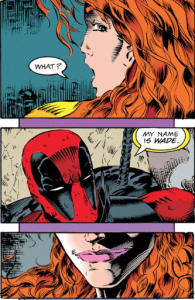 Now, if over the course of this piece, you have gotten a sense that I want some pathological, introspective, joyless portrayal of the character, I may not have emphasized my love of the humor enough. I don’t want him brooding over his failures for two hours at all. In the melodrama department, less is more with this character. As in these two miniseries and in every episode of House, there are few clues given to what is behind those jokes until the third act. I’m just asking for a sign of a beating heart to give a sense that his actions towards others and theirs towards him are affecting on more than a superficial level. When a character is created, no matter how cold hearted they say they are, it is important to give a sense of what they care about, that they do care about something or someone in order to endure that character to a relating audience. If you need more proof, see Paul Dini’s explanation for his famous revamp of Mr. Freeze. Deadpool is rarely given that anymore. In the Dark Reign series, Way gives him a shared chuckle with Bullseye after three issues of trying to kill each other in hilariously absurd and dark ways. Kindred spirits. Thank you! May I have more please, more than one every few years? I also love his relationship to Siryn in the Mark Waid series because, despite what they say to each other, there is a subtext that they are intrigued, even attracted to each other in ways they may not even realize themselves and Waid is deep enough, even in the era of excess, to never let that translate to the expected physical intimacy. He keeps it about two people who find each other amid the chaos of themselves and others and discover some solace there. Not sentimentality, but a sign of life.
Now, if over the course of this piece, you have gotten a sense that I want some pathological, introspective, joyless portrayal of the character, I may not have emphasized my love of the humor enough. I don’t want him brooding over his failures for two hours at all. In the melodrama department, less is more with this character. As in these two miniseries and in every episode of House, there are few clues given to what is behind those jokes until the third act. I’m just asking for a sign of a beating heart to give a sense that his actions towards others and theirs towards him are affecting on more than a superficial level. When a character is created, no matter how cold hearted they say they are, it is important to give a sense of what they care about, that they do care about something or someone in order to endure that character to a relating audience. If you need more proof, see Paul Dini’s explanation for his famous revamp of Mr. Freeze. Deadpool is rarely given that anymore. In the Dark Reign series, Way gives him a shared chuckle with Bullseye after three issues of trying to kill each other in hilariously absurd and dark ways. Kindred spirits. Thank you! May I have more please, more than one every few years? I also love his relationship to Siryn in the Mark Waid series because, despite what they say to each other, there is a subtext that they are intrigued, even attracted to each other in ways they may not even realize themselves and Waid is deep enough, even in the era of excess, to never let that translate to the expected physical intimacy. He keeps it about two people who find each other amid the chaos of themselves and others and discover some solace there. Not sentimentality, but a sign of life.
We’re now on the verge of a film debut for the iconic character. I am cautiously optimistic about it. Though he seems to involve himself in failure after failure, there is something about Ryan Reynolds that I’ve always found enduring. I can’t name what it is. Let’s just call it intangible delight. His sardonic performance style and capacity for intensity is pitch perfect for the character. I was given a great deal of hope in the casting of Morena Baccarin as Copycat. That means maybe some hope for a little of my favorite, The Circle Chase. In my ideal world, the film would be marketed less as a “comic book movie” of the current comissance and more like the 80’s grindhouse, handmade action movies that inspired the source material and follow through with a surprise with the kind of depth the character is capable of. Overall, if Deadpool is to be portrayed on screen in a way that is meaningful and relatable, on the part of the creators and artists, further analysis will be required.

